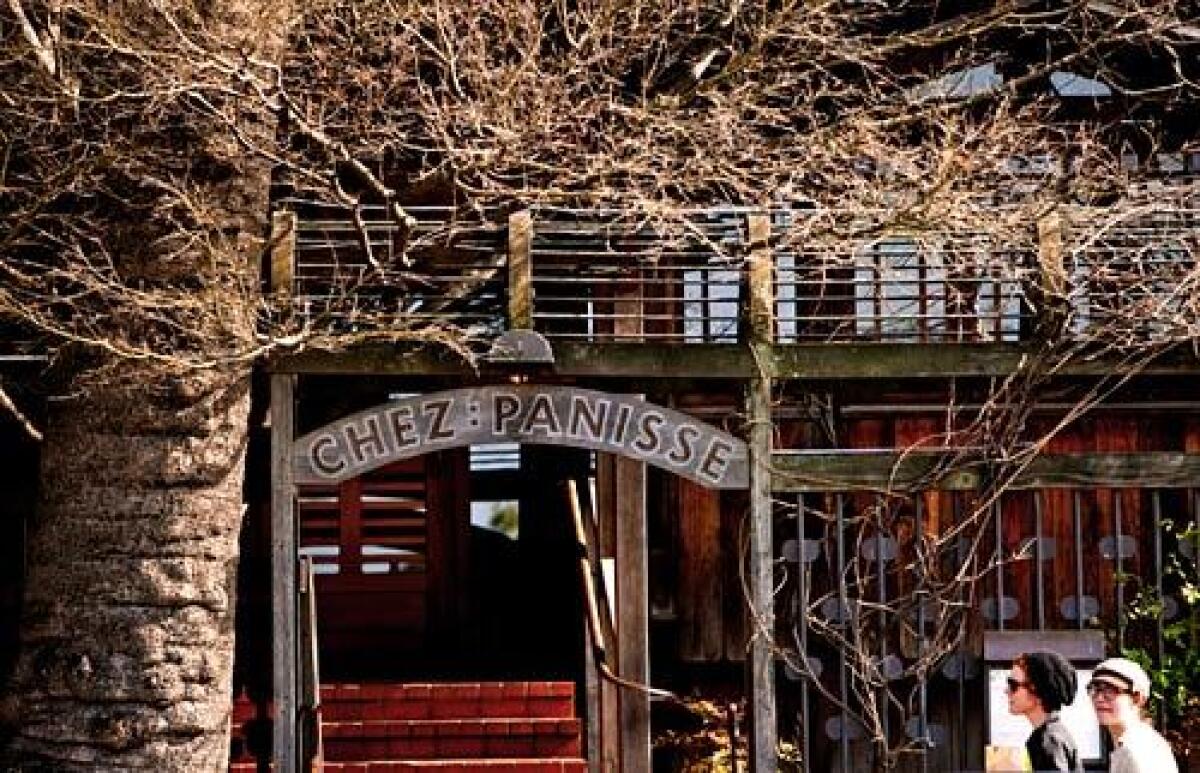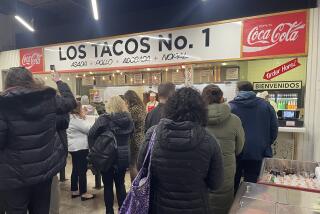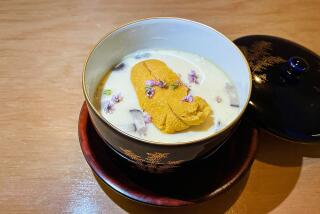Foodie paradise in Berkeley

Even if I don’t eat Velveeta, you couldn’t call me a dedicated foodie; I just like eating good food. So, every so often, I treat myself to a little culinary tour to sample special treats .
“Food makes sense to everyone,” says “epicurean concierge” Lisa Rogovin, “even if you’re not a foodie.”
It makes more sense after spending three hours with her in January as she led a walking tour of Berkeley’s Gourmet Ghetto, the place where the California food movement got its start. Some may argue that Berkeley is also the end-all of the movement, but it’s certainly not the be-all.
Up and down the Golden State, visitors are flocking to culinary tours. “I didn’t invent the wheel,” Rogovin says. Paying homage to California’s culinary creativity and its dominance as an agricultural state, they’re sampling chocolate in Sonoma, authentic Italian gelato in Old Pasadena and tortillas in San Diego.
Some say Peet’s Coffee & Tea started the movement in 1966, along with the Cheese Board, to shape Berkeley’s taste for sustainably sourced, organic and fresh ingredients. This mini-explosion happened five years before Alice Waters opened Chez Panisse Restaurant, known to locals as a neighborhood bistro, in the north Berkeley area.
Food, glorious food, is mostly what the Gourmet Ghetto is all about.
It’s an enjoyable area to walk. Its main thoroughfare, Shattuck Avenue, with sidewalk tables and chairs sheltered by trees, gives it a small-town feel.
It’s even better as a stroll with a gourmet guide. Rogovin has offered her weekly three-hour tasting tour since 2007. She had worked for Gourmet magazine and started culinary tours for Ritz-Carlton. After selling her house and doing the “eat-pray-love routine” in 2005 and 2006 — 14 countries in 10 months — she returned and expanded her tours.
A group of us — eight women and one guy — assemble in front of the Cheese Board Collective, which Rogovin calls “the cornerstone of the Gourmet Ghetto.” We introduce ourselves and discover that we share a love of food, but not all the participants consider themselves serious about it.
Rogovin brings out two small wheels of Cowgirl Creamery cheese, the Mt. Tam and the Red Hawk, and spreads them on crusty bread while she explains the collective movement. All the people who work at the Cheese Board Collective are members; there is no boss or manager, and all collect the same salary. They are experts in their business — the more than 300 kinds of cheese the store stocks. They also make bread and sell olives, coffee and pastries.
Two doors down, patrons at the Cheese Board Pizza Collective have spilled outside to sit at small tables and eat pizzas while live music floats out of the open windows.
We head down Shattuck, some of us still nibbling our bread and cheese, to Saul’s Restaurant & Delicatessen. This time, we sit at a table and sample locally made full- and half-sour pickles. Peter Levitt, Saul’s co-owner, hands us small pastramis on rye. He says Los Angeles claims to be No. 1 in the state for pastrami, but he thinks his is just as good. In fact, he thinks his is better because it’s served on a dark Acme Bread (another locally made product). “L.A. bread sticks to the roof of your mouth,” Levitt says.
We walk one block to the original Peet’s at Walnut and Vine streets. Dutch immigrant Alfred Peet opened it in 1966 because he thought Americans were consuming poor-quality coffee. The store looks similar to just about every other Peet’s in the world, and it smells scrumptious.
Its general manager, java connoisseur Scott Soohoo, tells us all about coffee in general and Peet’s in particular. His spiel is a bit too long, but I learn that it’s better to use a gold cone, not paper filters, and to freeze, not refrigerate, my coffee beans (but subsequently, I couldn’t tell any difference).
After I buy my half-pound package of whole bean Sumatra Blue Batak coffee, the group walks back down Vine Street to the Juice Bar Collective, a hole-in-the wall that sells organic food and juices. It’s not big enough to hold us all, so Rogovin brings us a sample from the fresh everyday menu: a large wedge of black bean polenta and Cheddar cheese casserole. We stand on the sidewalk and approve.
We wash it down with a glass of Merlot from Vintage Berkeley, across the street, where about 125 bottles of limited-production wines are for sale from small importers, local wineries and independent distributors around the world. None costs more than $25.
Then it’s on to Love at First Bite, hidden upstairs at the back of a small group of stores on Walnut. The aroma of freshly baked goodies elicits gasps and proves that we’re all lovers of the sweet stuff.
Owner Pat Powell makes everything from scratch, using the finest ingredients — Mexican vanillas, Callebaut and Schokinag chocolates, real butter, milk and eggs from local dairies. Her most popular cupcake is the Red Velvet, made with cocoa and buttermilk and topped with cream cheese frosting; it’s smooth, moist and dark, and you’ll want a second one. What’s not to love?
We head downstairs, back to Shattuck Avenue and the Epicurious Garden and its eight fine food businesses. The building, which dates to 1916, when it was a movie theater, has been remodeled with benches and a garden; it’s a nice place to relax and eat your purchases.
Our first stop inside is Soop, where co-owner Marc Kelley hands us cups Thai red lentil with coconut soup. It’s flavorful and only mildly hot. The soups, chowders and chilies here are all homemade and based on traditional recipes. The weekly menu changes depending on whatever farm-fresh produce is in season.
Our last stop is Alegio Chocolate,also in the Epicurious Garden. Alegio chocolates are a work of art. The elegant truffles ($29.50 for its signature box of nine) are made by hand with no preservatives or artificial ingredients.
Co-owner Panos Panagos cuts small pieces from bars of chocolate for us to taste — 100% chocolate (bitter but edible), 80% (“The purest made today,” he says), 75% with ginger, 75% with orange peel, 73.5% with cacao nibs.
We’re overwhelmed. “It’s one thing for me to talk,” Panagos says. “It’s another for you to taste.”
More to Read
Sign up for The Wild
We’ll help you find the best places to hike, bike and run, as well as the perfect silent spots for meditation and yoga.
You may occasionally receive promotional content from the Los Angeles Times.






